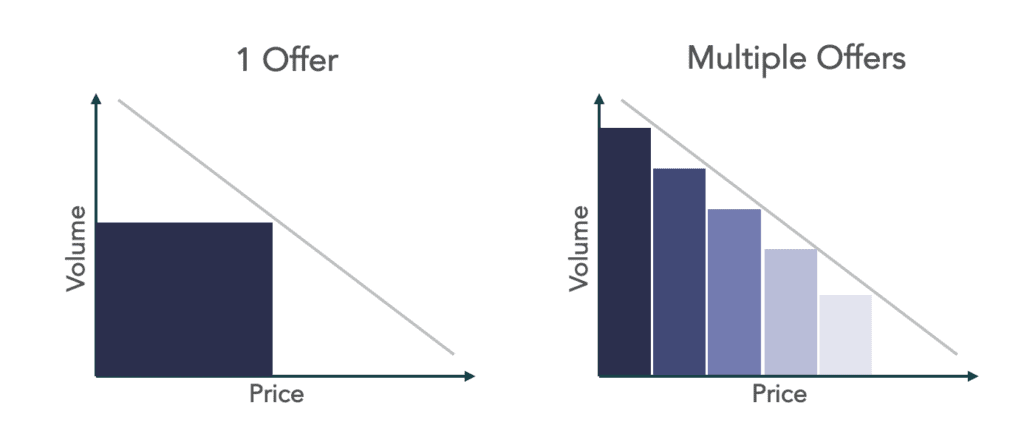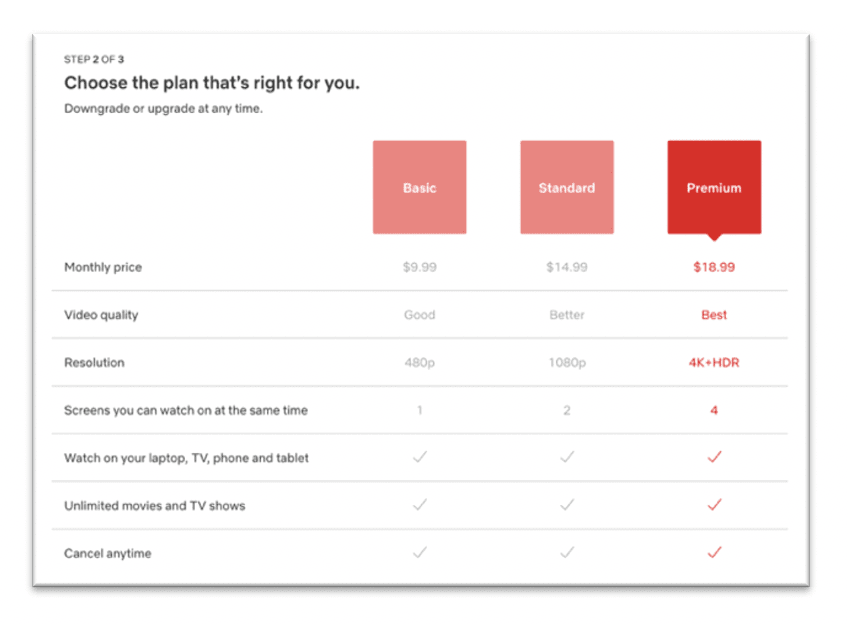Let’s face it, COVID-19 has fundamentally changed the way we live and do business for the foreseeable future.
In terms of the business world, many companies have made a decisive turn toward subscription-based pricing—we could see this trend even before the pandemic hit.
The Rise of Subscription
Pricing Models
According to the International Data Corporation (IDC) by 2022, 53% of all software revenue will be generated by a subscription pricing model. From these numbers, it’s clear that the trend of monthly subscriptions is exceeding even the wildest expectations. With the rise of the young and hip subscription-based pricing companies, this model has infiltrated every area of our lives, whether it’s our daily meals (Hello Fresh), choice of undergarments (MeUndies), shaving needs (Dollar Shave Club), radio listening (SiriusXM), television watching (Netflix & HBO) and even the way we whip around town (Cadillac). As we can see, subscription-based pricing is growing rapidly and is here to stay.
Even though the subscription train was coming, it has now been accelerated by COVID-19. If you’d like to consider maximizing your revenue with a subscription-based pricing model or membership pricing strategy, it is important to develop a strategy based on the balanced Revenue Growth Management framework that draws on profitability, value and the market.
- Why Customer Segmentation is Crucial
- Why Your Subscription Tiers Should Be Clear
- How to Understand Customer Churn
Why Customer
Segmentation Is Crucial
Not surprisingly, when it comes to addressing your customer’s specific desires and needs, one size does not fit all. It is necessary to establish customer segments in order to maximize the revenue opportunity of a subscription price model.
As you can see in the figure above, segmenting your offering will allow you to capture the maximum potential revenue, which is reflected in the area beneath the curve. The question then becomes: What do you base the segments on? The answer is value.
In her book The Membership Economy, Robbie Baxter determines that for a subscription model to be effective, “the value needs to be clear and differentiated”. Though this might seem obvious, it is much easier said than done.
Within your customer base, different groups will value different things; it is key to understand what those attributes are and create customized packages for the consumers that are willing to pay premiums.
Let’s see how this is executed by the best in class: Netflix’s subscription pricing model.
As mentioned above, it is important to define the attributes that are valuable to different customer segments. Netflix has determined that pixel resolution, the number of accessible screens and video quality are the attributes that will drive different types of customers to make different purchasing decisions. As a result, these options became the key differentiators between plans.
Now that we’ve seen how Netflix segments its customers based on different value attributes, you might be wondering how you can understand your own customer segmentation.
3 Steps to Segment Your Customers
Analyze historical data and calculate attribute elasticity
This process will offer insight, but the information will likely not be practical, since companies don’t change price often.
Hear directly from your customers with a survey
MaxDiff analysis can be a great way to understand what customers value in a product and service offering.
Construct discrete choice model or A/B testing
This process will allow you to see what consumers are willing to pay for the added value.
Why Your Subscription
Tiers Should Be Clear
Returning once again to Robbie Baxter and her insightful work, The Forever Transaction, she stresses the importance of “mak[ing] sure your pricing model is easy for customers to understand”.
Often, when I hear people talk about subscription pricing models, they frame it in terms of contrasts such as Per Month / Per User / Tiered Model / Usage Model.
Although these are important aspects to consider as you develop your model, it is important not to overthink the model itself. You should continually come back to the customer values that you identified above, communicating them through clear messaging in your offerings.
It is essential to have clear and concise trade-offs between the tiers for your customer to choose from, based on their values. Trying to compare 20 different attributes is almost impossible for the average person; studies have shown that customers only consider
3-5 trade-offs between your tier options.
This clarity is especially important for promotional offers. Offers that seem too good to be true for the customer are just that—too good to be true. When you factor in the fine print and complex algorithms, an attractive subscription price for the customer ends up being split between strange timelines and leaves the customer feeling like the company isn’t being transparent and that they’re being shortchanged.
In the case of Netflix, they only communicate a handful of variations between the plans, as well as table stakes such as the “cancel anytime” option. To make things easy for the customer, stick to the 3-5 things that the particular segment values and communicate in a way that is easy to evaluate the trade-offs between your offerings.
How to Understand
Customer Churn
In a subscription-pricing model, it is helpful to think about subscriptions as a two-way relationship where value is exchanged between the customer and the company. As is to be expected, if customers eventually believe that the value is gone, they will leave without a second thought. This reality is often overlooked by companies working with subscription-based pricing models, leaving the all-important lifetime value of the customer out of the equation.
Lifetime value is based on the customer’s average spend and tenure. While many companies focus their pricing and revenue strategies on the spend portion, it is necessary to also focus on the customer’s tenure and the probability of their defection. If you understand what drives the defection of your customer segments, you will be able to intervene before they leave and contribute to the churn.
In order to understand the drivers that contribute to defection, it is informative to run logistic regression modelling on the subscriber data. By better understanding these drivers, actions can be put in place to delay a customer’s defection. When it comes down to it, the most valuable customers are the ones you already have.
Grow Your Revenue with a Subscription Pricing Model
To sum up the process, here are the most important steps to follow as you develop a revenue growth strategy:
- Segment Your Customers
- Identify the Value
- Develop Clear Communication Around Price and Discount
- Understand Customer Churn
By following this process with detailed analysis and a balanced revenue management framework, you will be able to improve your company’s revenue and profit as you implement a subscription pricing model.
If you’d like to learn more, check out Robbie Baxter’s two amazing books:
The Membership Economy & The Forever Transaction.
I can’t wait to see what you will achieve with a new subscription pricing model! Please feel free to connect and share your successes with me at mstanisz@revenueml.com.
ABOUT THE AUTHOR Michael Stanisz is a Partner at Revenue Management Labs. Revenue Management Labs help companies develop and execute practical solutions to maximize long-term revenue and profitability. Connect with Michael at mstanisz@revenueml.com







